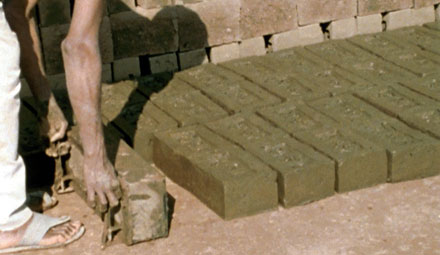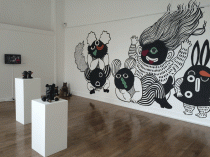
Filmmaker, artist and writer Harun Farocki has made a staggering 90 films during his 40 year career. He is best known for his experimental documentaries which explore and challenge the way we interpret visual language through subject matter as diverse as the making of bricks, the financial system, shopping malls and the Gulf War. An exhibition of his work will be on display at the CCA, Glasgow, 16 February – 3 March 2011. Here he talks to Central Station about his work and the new filmic literacy that he believes defines our era.
Tell me about your exhibition, Comparison via a Third, which will be taking place at the CCA, Glasgow this month.
Comparison via a Third is a title of a work I made some years ago. It shows how bricks are made and used in totally different societies, in rural Africa, in cities of India and in European high tech factories and constructions sites. A dual projection in which I try to compare without judging. We decided to name the exhibition so because all the works try to find approaches in which one has to compare images. A montage based on equality.
You have worked across several media: cinema, television and installations in galleries. Is there one that you feel most comfortable working in? If so, why?
Cinema is my ideal. But not the existing – quite marginalized – distribution system we find today. A quotidian and extraordinary cinema at the same time. When working for television I always tried to make works which referred to a cinema to come. Also in galleries or more generally: in art spaces I try to keep the options open. We are in a diaspora hoping for a return to Jerusalem. But I can’t imagine how this city will look.
You also are a writer, how do you see your writing relating to your work in moving image?
Film structure can profit from the textual legacy: from novels and essays. Also vice versa. The transfer is not an easy one though. One has to respects the moving image genre’s autonomy. Television was mainly a kind of illustrated radio and also the web is language based.
Today we see people in Egypt, filming the protests on their mobile phones, is everyone a filmmaker now? And what do you see as the implications of this new relationship with producing moving images?
It is the strength of the word based culture that every reader can write. In this sense already the vhs recorder was strongly influential. It was the first step to film literacy and the ubiquitous cameras are the next step. Although the cinema and television system is in a bad state, wonderful and innovative films are made worldwide. This is due to the new literacy. An audience has emerged which can “read” films far better than ever.
Which filmmakers working today do you find most exciting?
Over the last decades Godard was always the guiding figure. Due to the developments described above I could make a long list today. Claire Denis is a strong voice and Gus Van Sant too. I could also name the Iranian cinema. I try to give up the concept of the auteur and look at film from a more structural point of view.
Harun Farocki: Comparison via a Third is on at the CCA, Glasgow, 16 Feb – 3 March 2011.
Find out more about Harun Farocki at http://www.farocki-film.de/














Comments